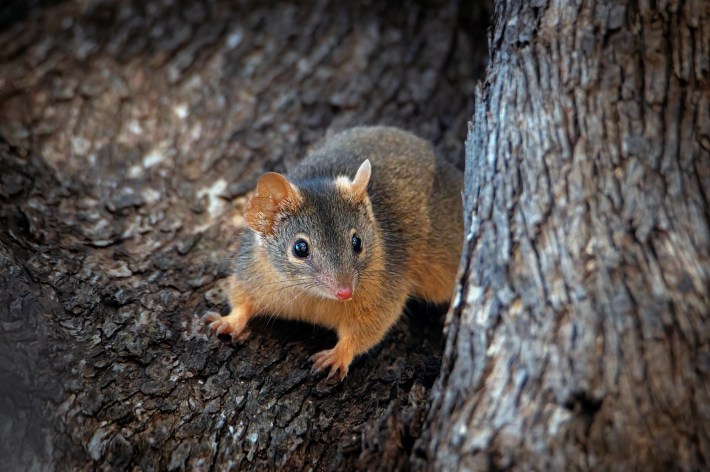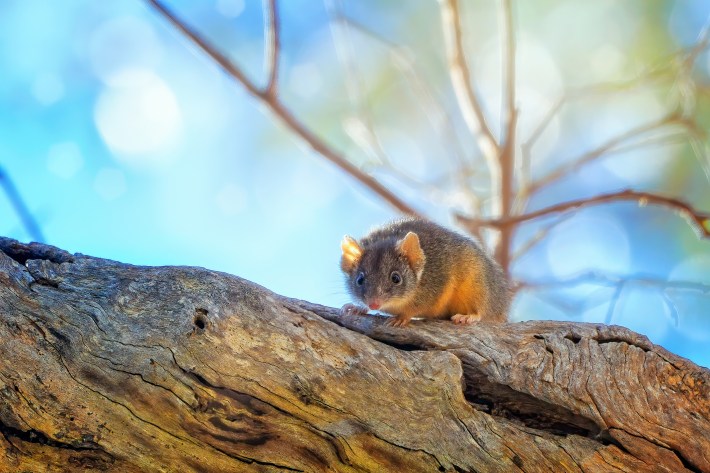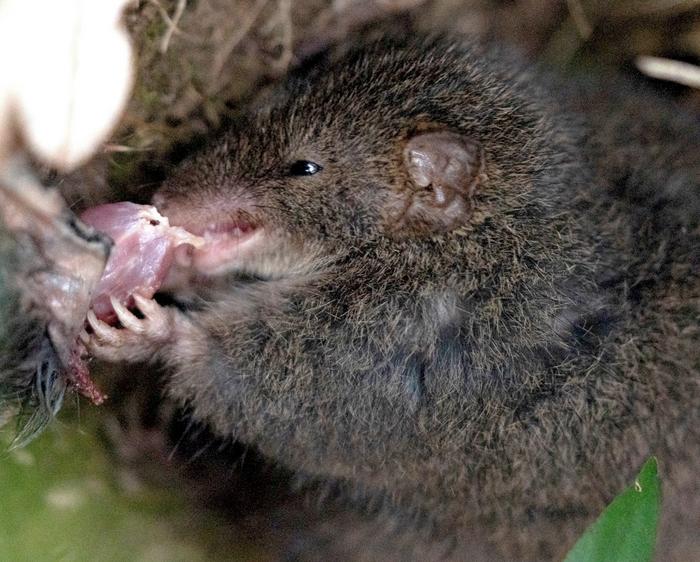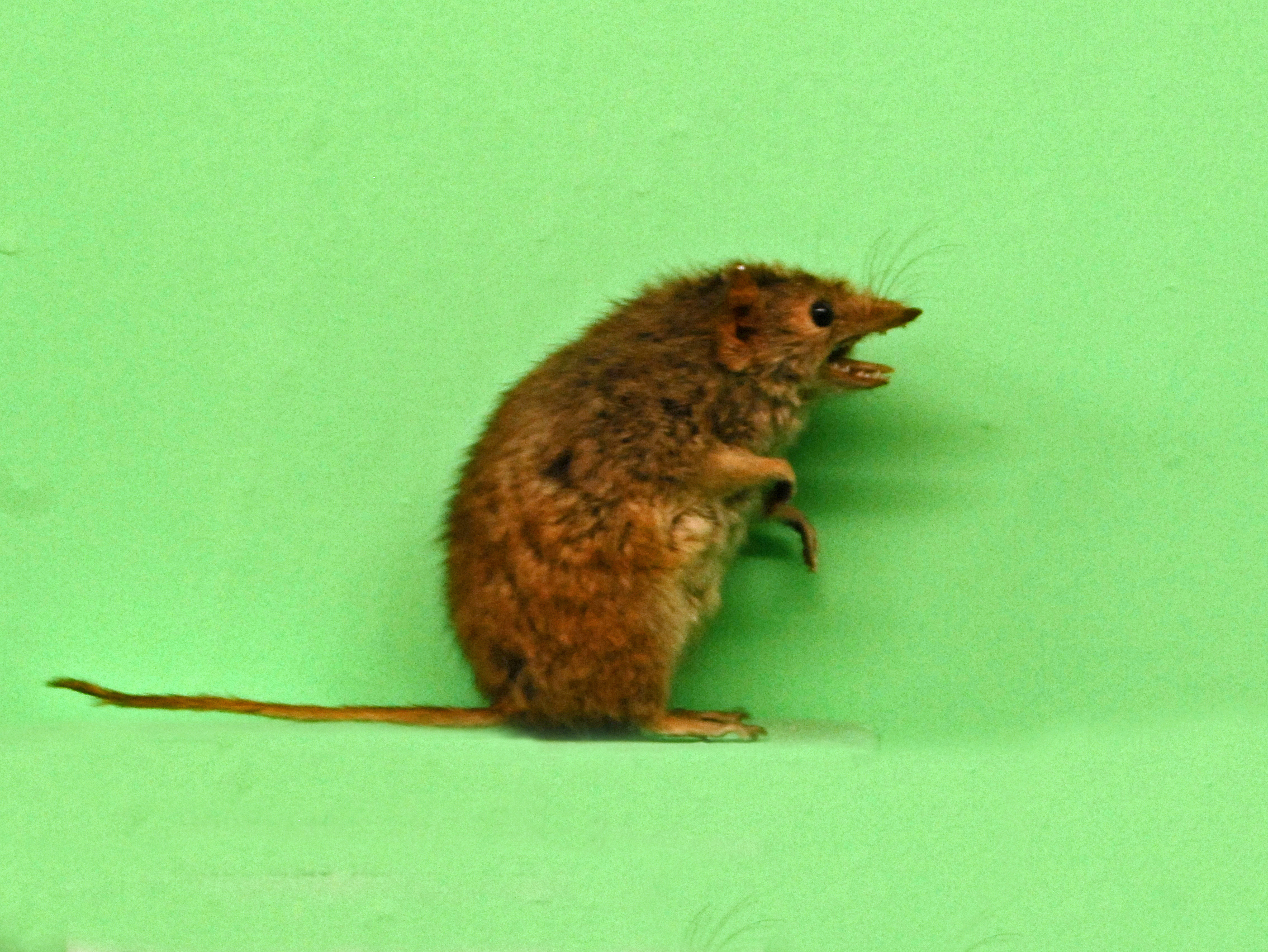If you've heard anything about the mousy marsupials in the genus Antechinus, it's that they kill themselves having sex. The tiny mammals look like the star of a Pixar short, with inquisitive snouts, clamshell ears, and a delicate spray of whiskers. But the antechinus is also the only mammal that engages in mating sessions so grueling that they leave all the males, utterly spent from the climax of their brief lives, dead. This evolutionary strategy is called semelparity, in which species invest all their energy into a single sex fest—going out with a bang and a whimper.
The antechinus's morbidly alluring way of life has long earned the marsupial tabloid renown: "Meet the sex-mad marsupial which literally kills itself making love" announced a story in The Mirror, and "These sex-mad Aussie marsupials are so randy they’re killing themselves with violent long-lasting bonking sessions" pontificated The Sun. If you set aside the death, it's a little inspiring. Semelparity might seem a noble way to live: a Pacific salmon leaping upstream to release its eggs; cicadas emerging from years-long burial to briefly experience life to the fullest; an octopus waiting until her eggs hatch to die. M.I.A. wrote an entire song extolling the virtues of living fast and dying young. And what better way to go out than with a sex fest?
Unfortunately the antechinus's end-of-life sex fest leave much to be desired, even as far as such fests go. Ever since the first antechinus was described to science in 1803, researchers have continued to reveal newly unforgettable and disturbing facts about the nature of the sex fest, at least as they concern the individuals participating in them. The sex fest often overshadows more important news about Antechinus, such as the threat climate change poses to their misty forest home and their seasonal breeding schedules. I have compiled all of the details of the sex fest, for your consideration but not your approval, for antechinus could not care less about what you might think of the way it chooses to live its life.

The juvenile antechinus, knowing nothing of the sex fest, lives a halcyon life. By day, the marsupials nest in tree hollows or fallen logs. At night, they emerge in the Australian woodlands and chow down on spiders and insects, and will even snack on the occasional petite frog. Some species of antechinus even raid bird nests for eggs. These peaceable routines come to an end when males reach the age of about 11 months. In the months leading up to that milestone, the males stop making sperm, as the upcoming sex fest marks their one chance to pass their genes on to the next generation. They feed voraciously, with some males doubling their weight. They are in the prime of their lives, and they are ready for the sex fest.
Then, like the banging of a great gong, all the female antechinus go into heat at the same time, alerting the males it is time to come hither. The males scramble to move from mate to mate, biting the backs of the females' necks during each tryst and scrambling to copulate with as many mates as possible. These sessions last up to 14 hours and happen continuously for one to three weeks, during which time males' bodies course with testosterone.
This surge of testosterone eventually makes the males unable to shut off their stress hormones, which in turn rise so high their immune systems collapse and the males drop dead. This is technically a stress-induced death, and if this phenomenon sounds at all relatable to you, I promise it is not. These stress reactions are "characterized by a tenfold increase in the plasma levels of free glucocorticosteroids and a simultaneous breakdown of the immune and inflammatory responses," Dietrich von Holst explained in a paper in the journal Advances in the Study of Behavior. What does this look like in real life for the antechinus? The little marsupial begins to lose his fur. His tissue disintegrates and he develops sores. With his immune system shot, he gets gangrene. The amount of cortisol in his system can cause him to go blind. And not to be outdone by other bodily dysfunctions, now comes the gastrointestinal hemorrhaging, creating a hell of a bodily experience for such a little guy. "The manner of synchronised suicide in males is quite horrible to see," a group of researchers wrote in a piece in The Conversation.

Bear in mind that while all this is happening, the antechinus is still 100 percent committed to the sex fest. "They'll bleed internally, they have ulcers, their fur falls off in patches, sometimes they're stumbling around blind and still trying to mate," Dr Baker said to the Australian Broadcasting Corporation. Nothing will stop these mammals from mating but death itself. (The dreadful details do not end after the sex fest, and are not restrained to the males of the species. Females "strangely ... have about 20 per cent more babies than nipples," Diana Fisher, a conservation biologist at the University of Queensland, told the Australian Broadcasting Corporation, leaving several babies to die after birth.)
But unlike estrus, death does not come for all antechinus at once. Some males succumb to their chaotic blend of bodily injuries sooner than others, dying amid the sex fest. And in areas with two species of antechinus, the larger species breeds first, leaving behind a trail of corpses. But, according to new research on the sex fest published in the journal Australian Mammalogy, this does not bring down the mood. Because apparently a key element of the sex fests is cannibalism, with dying antechinus eating the dead before dying themselves.

Elliot Bowerman, an employee of Australia's Sunshine Coast Council, was walking to a lookout in a national park in New South Wales, an idyllic woodland of snow gum and silvertop trees, when he heard a rustling in the shrubs below. Suddenly, a wild male mainland dusky antechinus emerged from the bush, dragging his meal, which was another antechinus. Bowerman photographed the cannibalizing antechinus, which itself was in a state of extreme physical decline and had a badly damaged right eye and patches of hair loss. Bowerman continued to walk to the lookout when he made another serendipitous discovery: a dead antechinus that had been partially eaten, seemingly by another antechinus.
What can we learn from the new facts of the sex fest? On one level, we have learned that cannibalism appears to be a common practice among antechinus, a serendipitous and easily available source of food that can help the marsupials make it through the end of the sex fest. Indeed, these fallen comrades do "not need to be pursued or overcome before being devoured," the researchers note. There are some more, gorier photos detailing the nature of this devouring published in the paper, which is paywalled, perhaps for the best.
On a more existential level, perhaps we have learned that death comes for us all, and if our passing can nourish those who come after us, this may be the most meaningful legacy we can leave behind. And isn't this why so many of us humans are drawn to make art? "Writing a book is a horrible, exhausting struggle, like a long bout of some painful illness. One would never undertake such a thing if one were not driven on by some demon whom one can neither resist or understand," George Orwell wrote, a quote that presciently also applies to the cannibalistic sex fests. One would never undertake such a horrible thing if they were not driven by some greater purpose, some unknowable, irresistible urge that simmers until we surrender ourselves to this grander calling and are subsumed into something transcendental. Such are the lives of artist and antechinus, creatures who live more sensationally than we may ever know.






